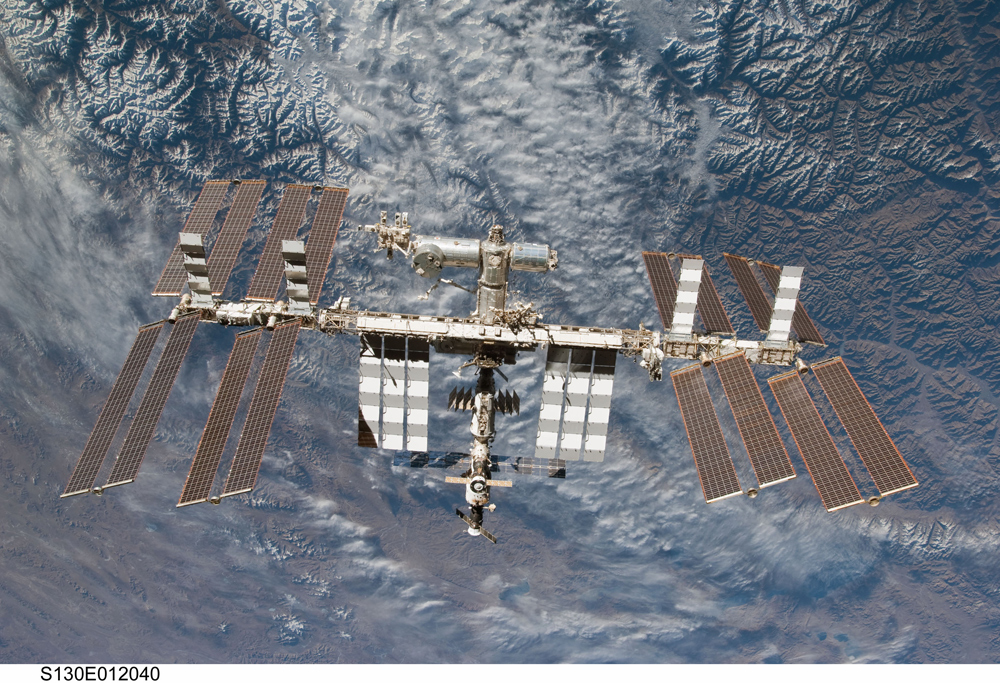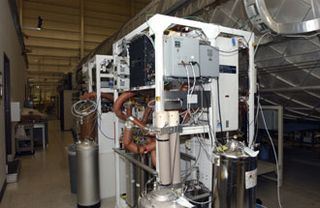Everyday Tech From Space: Water Recyclers Make Pee Potable

Water is as essential a part of everyday life aboard the International Space Station as it is on Earth. But accessing clean water is a lot trickier when you are 226 miles (363 kilometers) above the ground.
Crews have lived on the space station continuously for a decade now. Bringing drinking water to the space station for them is a costly affair, so over the years, NASA has found inventive ways to produce distilled clean water, using everything from ambient station humidity, created by astronauts' breath, to the crew's own urine. (Yes, you read that correctly.)
In years to come, ISS crew members will not be the only ones benefiting from the technology – water recycling will be vital when humans embark on long-duration spaceflights to an asteroid, Mars and beyond, or set up bases on Mars or the moon.
This water conservation effort has trickle-down effects. Growing concerns about contaminated water supplies on Earth have spurred research into sustainable practices and alternative sources of clean water. In other words, you, too, might have to become accustomed to the thought of drinking your own urine.
Life in space
In the 1960s, NASA's Johnson Space Center in Houston conducted a research program to develop water purifiers that were lightweight and easy to use and required little power. These portable systems were intended to supply pure drinking water for three-man Apollo crews for missions lasting up to two weeks.
Emerging from the research program were electrolytic silver ion generators that could eliminate bacteria from water within hours without the use of chemical disinfectants. They found broad applications in water management and treatment industries.
Get the Space.com Newsletter
Breaking space news, the latest updates on rocket launches, skywatching events and more!

But once humans began living in space, the issue of water recycling really rose to the fore.
The International Space Station's environmental control and life support system (ECLSS) helps astronauts use and reuse their valuable store of water. Before the system was put in place, bags of drinking water were shipped to the space station, and the crew's urine was discarded as waste.
Astronauts who live on the station for extended periods of time understand very quickly that they cannot afford to let anything go to waste. Just like other basic resource on the station, water must be carefully rationed and recycled.
The ECLSS water recycling system — which was developed at NASA's Marshall Space Flight Center in Huntsville, Ala. — reclaims wastewater from various sources, including urine, hand washing and oral hygiene; condenses humidity from the air within the station; and uses the water that is a byproduct of the fuel cells in visiting space shuttles.
Without this recycling system, an average of roughly 10,000 pounds of water per crew member would be required from Earth each year to keep the station properly functioning.
The station's purification systems reclaim wastewater in a three-step process. The first step filters out particles and debris. The liquid is then passed through semipermeable membranes containing substances that remove organic and inorganic impurities. Finally, a catalytic oxidation reactor removes volatile organic compounds and kills bacteria. The finished product is water pure enough to drink.
Good to the last drop
As stringently as astronauts recycle the station's supply of water, they use these purified droplets with equal frugality. Crew members will wash their hands with less than one-tenth the water that people typically use on Earth. And rather than using 50 liters of water to take a shower, which is about average on Earth, station residents will use less than 4 liters for their sponge bath.
Even with all the recycling efforts, it is necessary to resupply the station with clean water from time to time. Space shuttles produce water as their fuel cells combine hydrogen and oxygen to create electricity, and that water can be used when the shuttles are docked to the station. Russian Progress rockets are also outfitted to ferry large containers of H?O to the orbiting outpost.
NASA scientists are constantly improving the life support systems on the space station and looking for ways to reduce water loss and reuse waste products. As human exploration expands farther into space, the lessons learned on Earth and the ISS will be all the more useful.
You can follow SPACE.com Staff Writer Denise Chow on Twitter @denisechow.
Join our Space Forums to keep talking space on the latest missions, night sky and more! And if you have a news tip, correction or comment, let us know at: community@space.com.

Denise Chow is a former Space.com staff writer who then worked as assistant managing editor at Live Science before moving to NBC News as a science reporter, where she focuses on general science and climate change. She spent two years with Space.com, writing about rocket launches and covering NASA's final three space shuttle missions, before joining the Live Science team in 2013. A Canadian transplant, Denise has a bachelor's degree from the University of Toronto, and a master's degree in journalism from New York University. At NBC News, Denise covers general science and climate change.